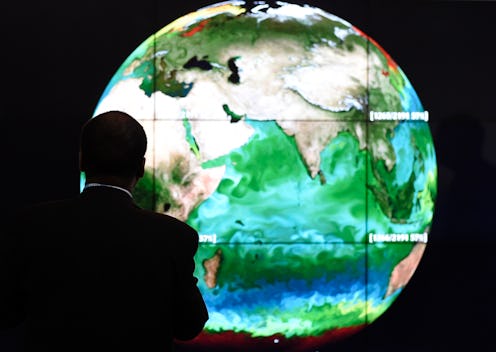News
The Breakthrough Initiative Kicking Off Today
On Monday, nearly 150 world leaders convened in Paris for the potentially landmark United Nations Climate Change Conference. For the first time since the the UN began its climate change talks, the conference will attempt to achieve a universal and legally binding agreement on how to curb greenhouse-gas emissions from every nation in the world. In conjunction with this historic conference, President Obama has announced the Mission Innovation climate change initiative, which will significantly accelerate clean energy research and development in the private and public sectors. The ambitious initiative is a perfect launching point for the even more ambitious global agreement on how to fight climate change. Here is everything you need to know about the Mission Innovation climate change initiative.
Even before Obama announced the initiative, along with French President Francois Hollande and other top world leaders, at the conference in Paris on Sunday, multiple countries have already committed to it, vowing to double their clean energy innovation research and development over the next five years. Mission Innovation sees this boost in clean energy innovation as the most effective way to respond to and counter the rapid increase of global warming and the other effects of climate change.
But with a name like Mission Innovation, the whole plan sounds complex and nebulous at the same time. If it truly does have the potential to change the tide on climate change, then you'll want to know all about it. Here are five questions about Mission Innovation, answered.
Which Countries Are Involved?
A total of 20 countries have signed on so far, including the five most populous countries in the world: China, India, the U.S., Indonesia, and Brazil. Some of the other countries on board include France, Saudi Arabia, Canada, Mexico, the United Arab Emirates, Norway, Denmark, and Chile.
How Will They Contribute?
These countries' respective governments will double their funding and investments in clean energy research and development. If the initiative models itself on some of the U.S.'s specific actions, then that could mean reducing the cost of clean energy products, like LED lights, collaborating with international universities to improve research, and creating new methods of securing funding for clean energy development.
What Role Will The Private Sector Play?
In conjunction with Obama's Mission Innovation, Bill Gates will be launching a complementary initiative called the Breakthrough Energy Coalition involving the private sector. This component will provide crucial backing from private-sector investors, who will focus on early-stage innovations in electricity generation, transportation, industrial practices, agriculture, and energy systems. The partnership between the public and private sector will be wholly symbiotic. Gates said in a statement:
The renewable technologies we have today, like wind and solar, have made a lot of progress and could be one path to a zero-carbon energy future. But given the scale of the challenge, we need to be exploring many different paths — and that means we also need to invent new approaches. ... Private companies will ultimately develop these energy breakthroughs, but their work will rely on the kind of basic research that only governments can fund.
Which Companies Are Backing It?
Led by Gates of Microsoft, the Breakthrough Energy Coalition currently includes 28 major private capital investors from 10 countries. These include Alibaba CEO Jack Ma, Facebook CEO Mark Zuckerberg, HP CEO Meg Whitman, and Sir Richard Branson, founder of Virgin Group.
What Is Its Ultimate Goal?
While there are a myriad of goals in the fight against global warming, such as making the cost of clean energy as competitive as fossil fuels and making clean energy affordable for developing nations, the ultimate goal of Mission Innovation is to limit the rise in global temperatures to 2 degrees Celsius or below.
